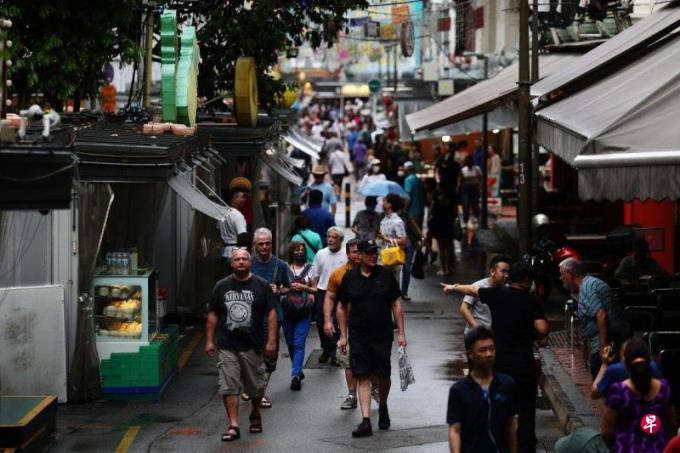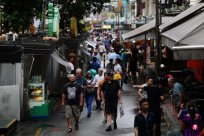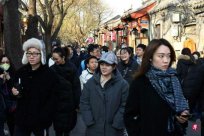
Each modern city should have an old city, or an old street ...
There is a Singaporean called "ox cart waterman". They have "three specials": they are particularly nostalgic, well -memory, and emotional.The talents who grew up in ox cart water are basically old -fashioned, and they are basically older. They always have some stories to share with others.Among them, the well -known pediatrician He Naiqiang is a bull cart waterman who tells the story of ox cart water.
Recently, Dr. He released the story of the new book ox cart waterman who said about ox cart water. He presented the past and present life of the big ox cart water from a young age, and presented it vividly and interestingly to the reader.He likes to read history and read the old newspapers and archives. He wrote in the pen of "speaking ancient" and said, "The bumpy of the bull cart water and the common memory of several generations of people in the precipitated people", he talked about his sincere feelings for ox cart water, and moreRadiation shows his love for the land of Singapore.
The beginning of this book uses the old street view in the old photos to bring readers into the historical picture of Singapore 100 years ago.A serious casualties occurred on June 19, 1919.Yu Bo, the May 4th Movement of China, spread to Nanyang. The local Chinese were unwilling to funeral and humiliated the hatred of the country, and burned anger to the colonial government's head.This riots revealed that the fate of ox cart water in the next half century was so much fate. In 1942, the Japanese army's air strikes, the ox cart water became a key bombing target. Many high -profile ox cart water people died during the occupation period of Japan.The ox cart water has become the home of the historical development of the People's Republic of China before the founding of the People's Republic of China. In different times, the Singaporean's sadness and joy are staged here.All walks of life in the old times can be found here. Each shop, every school, and every street are hidden in the sang and crying people.
In the early 1980s, at the intersection of near Deng Po Street, there was a coffee shop in the face of a row of shops in Dahua Theater (today is the Chinese flavor restaurant).The life pulse of the car is also because of fewer and fewer such old coffee shops.At that time, he encountered Mr. Li Dasalian, a well -known Cantonese, who was well -known. He was drinking stuffy tea alone.At that time, he had no ancient to speak, and the Chinese movement in 1979 changed his fate of the folk artist who told the story in the air in the air.They "disappeared" overnight.
When Li Dasalian talked about the peak of the ancient career, even the loud audience of Hong Kong's Li Da also had a lot of Li Dasha.Rong Shicheng, a professor at the Chinese Department of the National University of Singapore, revealed this old thing that surprised me at a seminar on exploring the Volkswagen Culture of New Malaysia last month.Professor Rong has been from Hong Kong and has been moving to Singapore for many years. He claimed that his family had loved Li Dasha before.Li Dashan is the victim of the policy, but history should not be forgotten.To this day, I still remember the loneliness of Mr. Gu Gu's sitting in the coffee shop.Dr. He and I confirmed that the coffee shop was called Qionglexuan Tea Room.
Each modern city should have an old city or an old street.This is not just to make tourists check in, or make people send some ancient feelings, but without these old towns and streets, modern cities have lost their souls.
There are upper and lower nine, Fuzhou, Sanfang Qixiang, and Qinhuai River in Nanjing ... Malaysia has the ancient city of Malacca, more than 200 kilometers away from the three or four hours of drive (the traffic jamage time excluding the long dikes).Malacca is a place where many Singaporeans love to go on weekends. There are Jichang Street, commonly known as cultural streets in the center, and the adjacent Red Square Dutch Plaza.Later, the traces of the Nyonya Culture and the Netherlands and Portuguese colonists left here.The characteristics of Malacca are obviously different from other cities on the Malay Peninsula.
I also often compare ox cart water with the ancient city of Malacca. Although the two places have a common history of Chinese immigration and the background of Western colonial history, they have their own development path.
The largest turning point in the fate of ox cart water began in the 10 -year Qinghe River in the Singapore River in 1979.This century, the large project reorganized the street stalls covering the big ox car water area to the hawker center, and also also a clean and sanitary environment in the urban area.But the "too clean" ox cart water has lost its original charm, and tourists will no longer check in.In the 1980s, the government re -developed the urban area on the one hand, and on the other hand, it planned to retain historic buildings and several old streets, giving ox cart a new image, and rebuilding food streets and shopping streets.The official efforts are not in vain, and ox cart water has established a certain sense of existence in the minds of foreign tourists.
With the new generation of immigration, today's ox cart water gathers the flavor foods of various provinces in China. I hear Mandarin in different accents in the north and south of the river. Cantonese is no longer the main dialect here.After the changes in the times, the ox cart water has become a true China Town.If Li Dashan lived to this day, no coffee shop can let him sit still.
There are often outsiders who are curious about the three words "ox cart water". We should tell the story of good ox cart water. There is no pavement of early ox cart water stories, and there is no future foundation for founding.In addition to historians and literary and historians, we hope to see more people grasping the time like Dr. He, using words and other forms of cultural and artistic mediums to inherit the memory of the past generations and enrich the history of Singapore.
Zhang Yiren, Bowei, Zhongbang people, Bataya Kiln, Hou Hong Kong, Bodong Brazilians ... can tell their stories.Perhaps the Singapore Chinese Cultural Center and various constituencies can promote such memory projects, from the perspective of the people, and make up for the official history of the founding of the country.




